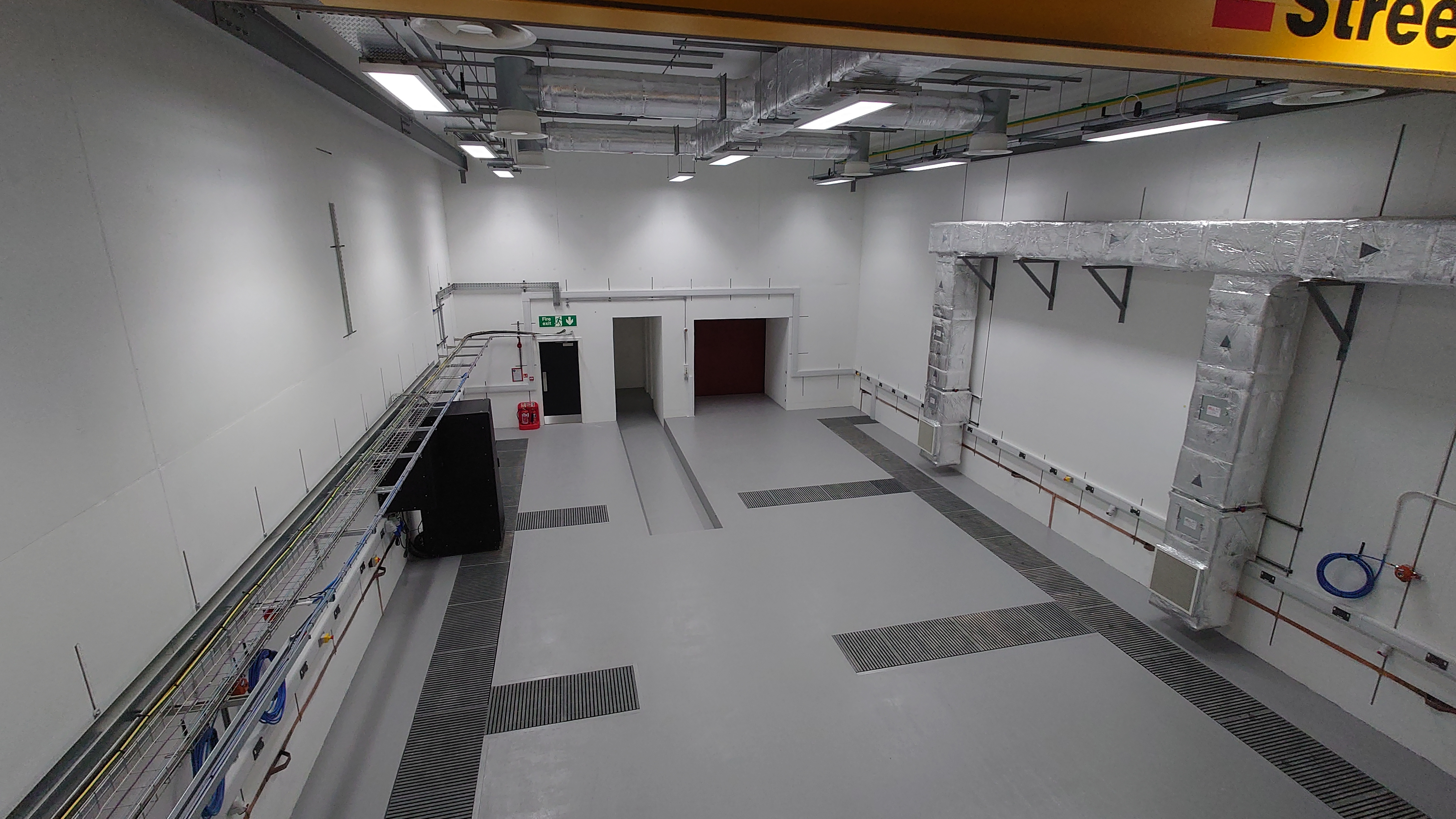EA2 has been designed as a flexible experimental area capable of undertaking laser-matter interactions with both short (f/3) and long focus (f/35) geometries. The primary aim of EA2 will be to deliver high intensity solid target interactions; however; it will be possible to also deliver liquid and gas targetry, depending on the science or application driver. By the end of the project, the large-scale infrastructure for the area will be delivered, namely the interaction chamber, adaptive optic (AO) chamber and some supporting beam transport. The design of EA2 permits a range of experimental configurations with the single 10 Hz, 1 PW beam, but also has the capability to include a second, high power beamline and multiple optical probes, should these become available as part of a future facility upgrade.

The design of the interaction chamber and complementary diagnostics will allow users to study high energy density states of matter, as well as produce a range of high-energy particle and photon beams for scientific or industrial applications. A number of targetry systems could be used in the EA2 interaction chamber, including gas cells, tape drive, liquid jets, cryogenic targets and multi-component complex targetry arrays. While some plasma and post-interaction diagnostics will be located in the interaction chamber, it is planned that most secondary-source diagnostics be housed in additional chambers that can be attached to the main interaction chamber as required.
A primary science driver for EA2 will be ion acceleration, where the high intensities coupled with high repetition rate will create a cutting-edge capability for studying the fundamentals of the various ion acceleration mechanisms, as well as optimising these sources for a range of scientific and industrial applications. These sources will be spectrally and spatially characterised by active ion diagnostics, the development of which is currently underway. Once the production of such sources has been established, schemes could be developed to transport laser-generated ion beams within the target area, to provide enhanced energy selection or collimation for a range of applications, including radiobiology or radiation hardness testing. High flux beams of neutrons will also be produced in EA2, most likely via a pitcher-catcher set-up.
With the addition of a second beamline as part of a facility upgrade, multi-beam interactions will be possible (for example, a second petawatt-class beam or lower energy auxiliary beam). These could be performed in dual short-focus mode, or short-long focus mode. The target chamber has been sized sufficiently to accommodate the required beamline optics, as well as the typical post-interaction diagnostics that are currently most commonly used.
